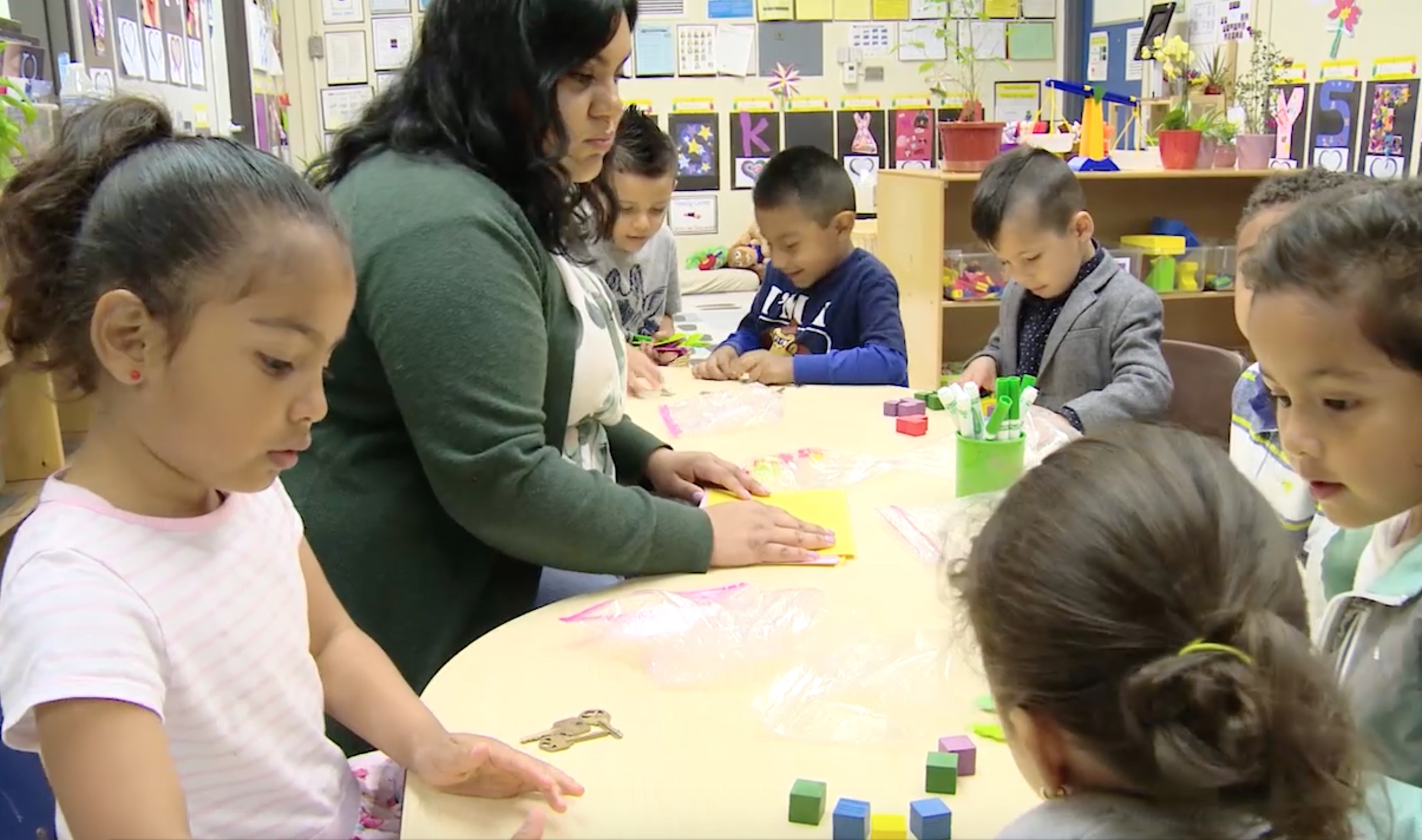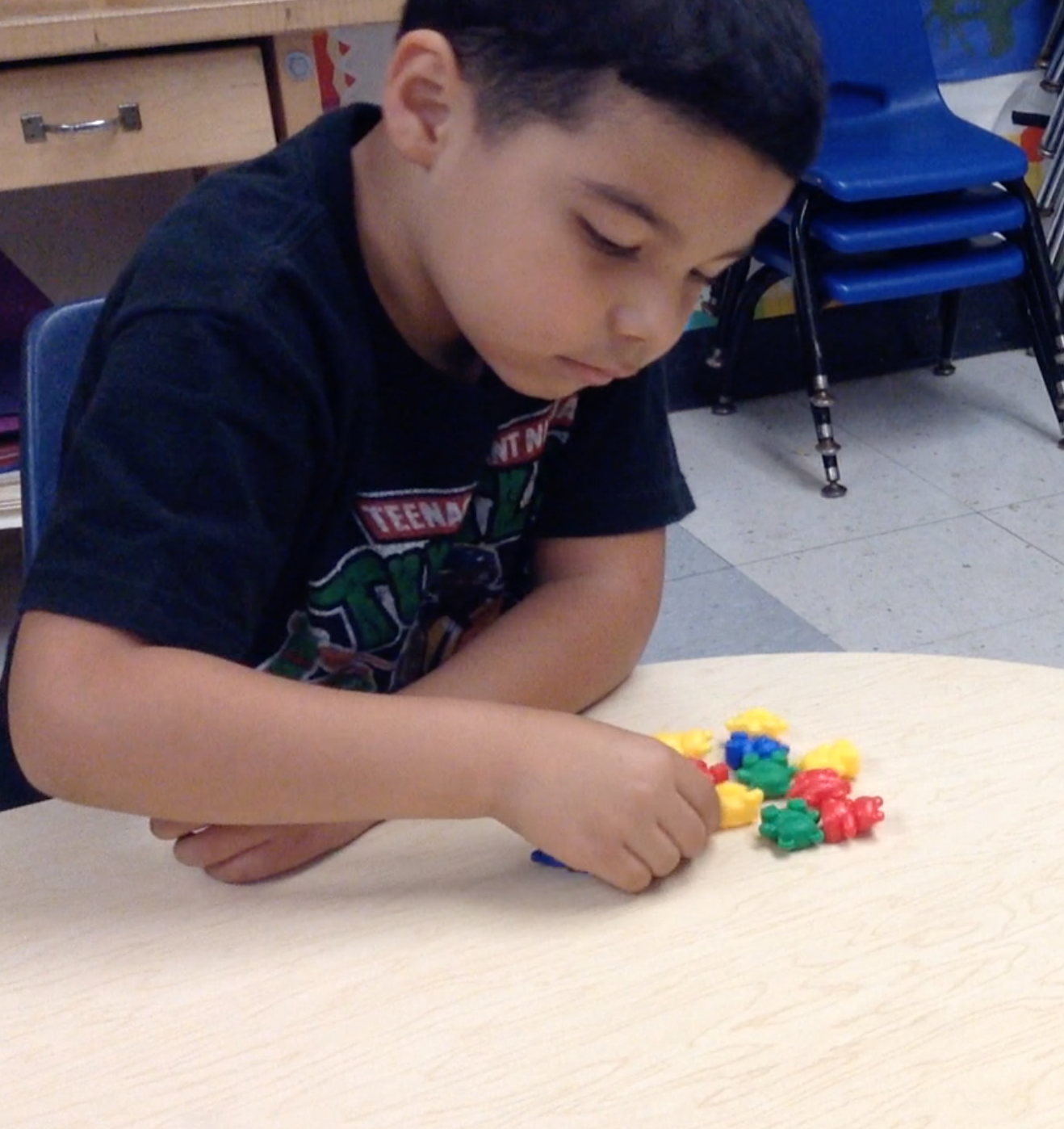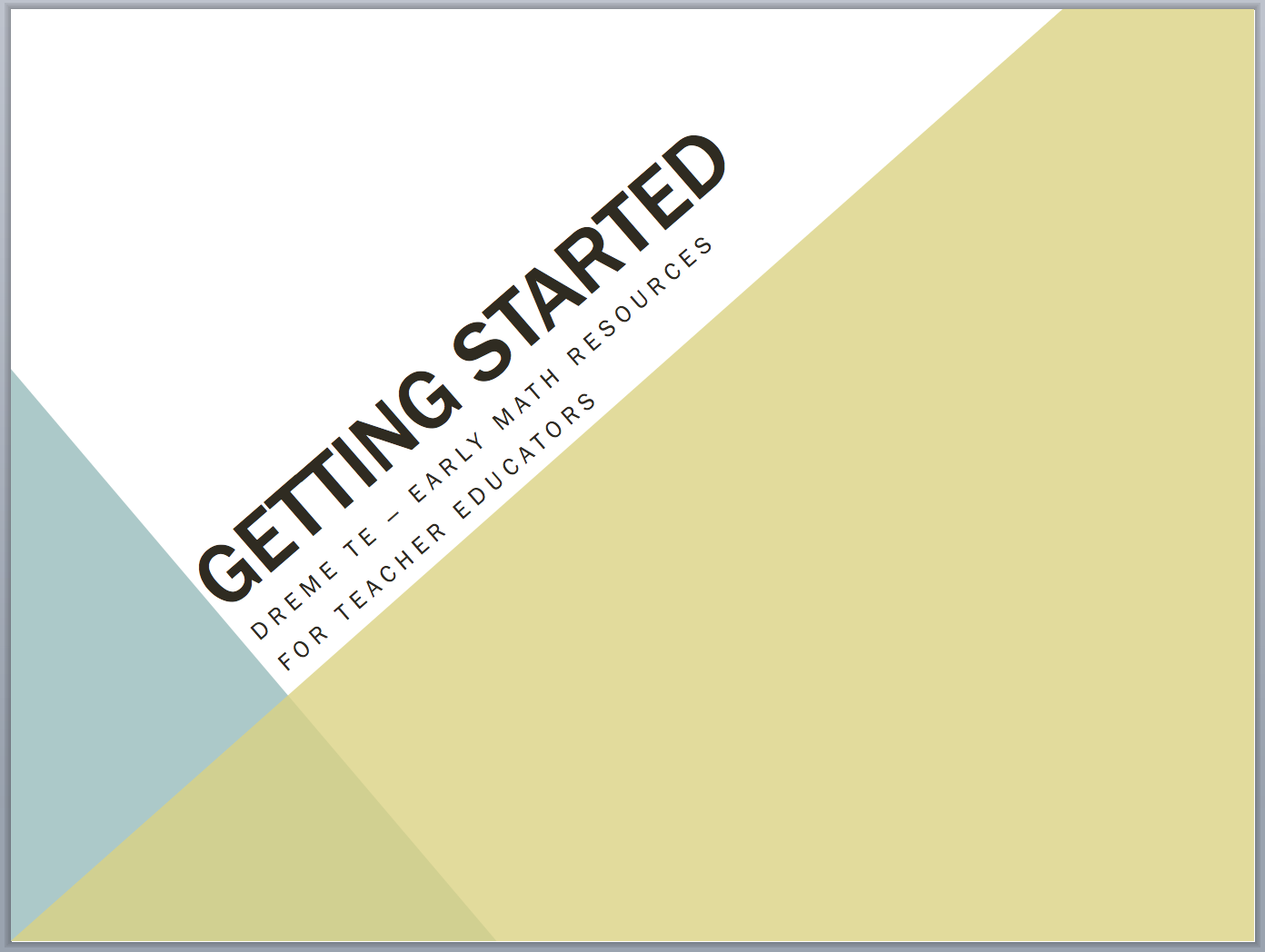This resource provides additional activities to support participants to engage more deeply with the activity of Counting Collections. We encourage you to first visit Counting Collections Overview to get started.
by Megan Franke
Role Playing to Support Counting Principles
In this activity, participants take turns playing the role of the teacher, the child, and the observer. Together, participants choose what they want the child to understand about counting. Then they do a role-playing scenario, asking the child to count, and making follow-up moves in response to the child counting. The trio of participants debriefs, then tries another scenario.
As children develop mathematical understanding within counting collections, they are often working on the following:
- counting sequence
- one-to-one correspondence
- counting the full collection
- cardinality
- grouping
This activity supports participants engaging with the complex nature of counting (and how students might demonstrate different kinds of understandings of each principle as they count a single collection), and what it might look like to support students who are working on counting.
Review by asking the participants to use a small collection to show you what it would look like for a child to count using one-to-one correspondence consistently, compared to what would it look like to have limited understanding of one-to-one correspondence. Ask what would it look like to know little of the counting sequence but understand one-to-one correspondence, or to use cardinality but not consistent one-to-one correspondence, and so on. The goal here is to help participants see that the counting principles develop in relation to one another and children can have partial understanding (it's not "all or nothing"). You do not need to know the counting sequence before counting a collection, for example.
Then have the participants work in groups of three to take the role of the child (choosing to have particular counting understandings), teacher (asking the questions), and the observer (works with the teacher to agree about student thinking). Then have participants switch roles and try another scenario. You might also ask participants to generate a new scenario after doing this a few times.
B) The child knows the counting sequence at least as far as eight, understands the cardinal principle, understands one-to-one correspondence.
C) The child has little knowledge of the counting sequence, has little knowledge of one-to-one correspondence, does not demonstrate the cardinal principle.
D) The child has limited knowledge of the counting sequence, does not demonstrate the cardinal principle, correctly uses one-to-one correspondence, groups counters by twos (but counts them by ones).
Using Tools in Counting

Tools can both support and constrain a child's learning to count. Let's consider some ways in which tools can support children learning the counting principles, and some ways in which they may make counting more challenging.
Share with participants a range of tools such as ten frames, containers, 100s charts, number strips (strips with numerals in sequence, often from 1-20), coloring tools (crayons and markers), post-it notes, language (different words that mean the same thing—could be another language). Ask participants to generate other classrooms tools that support learning to count.
Advantages of tools
In table groups, prompt participants to generate a list of the advantages of each tool. Check in with table groups and discuss with the whole group. Some possible responses participants might give are:
- Tools provide an organizational system
- Support children to recognize 10s and learn to make 10s
- Provide foundation for other mathematics like addition
- Children can subitize in order to know what the quantity is without counting
- Tools help children figure out what the symbol for eleven is by counting the numerals
- Containers help also with one-to-one correspondence
- Number strips help with counting sequence
- Language (having more than one word to describe something) supports sense making and provides resource for children who speak more than one language.
Worries about tools
In table groups, prompt participants to generate a list of the worries associated with each of the tools. Check in with table groups and discuss with the whole group.
- Children ay not fill up the ten frame completely
- They learn one way to organize and don’t use the tool flexibly
- The tool limits the way they can group objects
- Tools may not make sense to the child and so they get stuck
The Role of Tools
The goal of a tool is to support children’s thinking. Many tools support the math ideas while others help with organization. Children should choose. Details of the tool will change its usefulness. Being able to put things into a container helps to develop on-to-one correspondence; numerals make the ten frame less flexible. Tools are neither good nor bad. It’s how we use them and when we use them. Creating a way for children to use the tools flexibly will support children’s learning.
Getting Started in your Classroom
Participants reflect across activities and consider how they could integrate what they are learning into classroom work with children. The goal of all of the activities is to integrate knowledge of the development of children's thinking with mathematics and classroom practice. Attention is particularly focused on what participants see as possible for themselves and how what they are learning fits with their standards and mathematical goals.
Provide participants the opportunity to talk with each other in a structured way about how they plan to get started using Counting Collections in their environment. Here they can also link to their current curricula or a range of different possible curricular resources. The intention is to not have Counting Collections be an add-on but to allow Counting Collections to do the work of teaching. Use this discussion as a way to get to the big ideas underlying counting collections.
Examples of How to Engage Participants to Get Started
Table groups
Examine your school, district, and/or state standards. Which can you address with counting collections?
Individually
Write down three ways you might take up what you have learned in your classroom. If possible consider your children, your classroom environment, and the school context. What might matter?
Pair-share cycle
Create and add to a running list of ideas. Spend three minutes with a partner sharing your ideas. Switch to a new partner and share with them. Move to one more partner. Add to and adapt your own list.
Whole group
Discuss what participants see as challenges to their use of counting collections. What can you do to address these challenges?
Expected Challenges and Ways to Overcome Them
"I have too many students who are struggling with counting."
Start with small collections. Remember, you don't have to work on all of the principles at one time. Success is working on one of them. Children are learning a lot by counting.
"There's not enough time."
Start with collections out in choice time. Or start with one center that you work with. Or count together during morning meeting.
"There is too wide a range of abilities in my class."
Pass out collections of different sizes to different children. Let children count with a partner, ask children to put things in containers to help those who are struggling with one-to-one correspondence.
Teacher's Voice: The Power of Peer Interactions
Kids are so good at observing each other and helping one another. For some it can be less intimidating to work with another child than with the teachers. So sometimes I as a teacher might miss the mark with someone but another child will pick up on what there were doing or find a way to communicate with them even without words. It’s amazing to see! They’re so compassionate and helpful. -Natalie Gaxiola, preschool teacher



